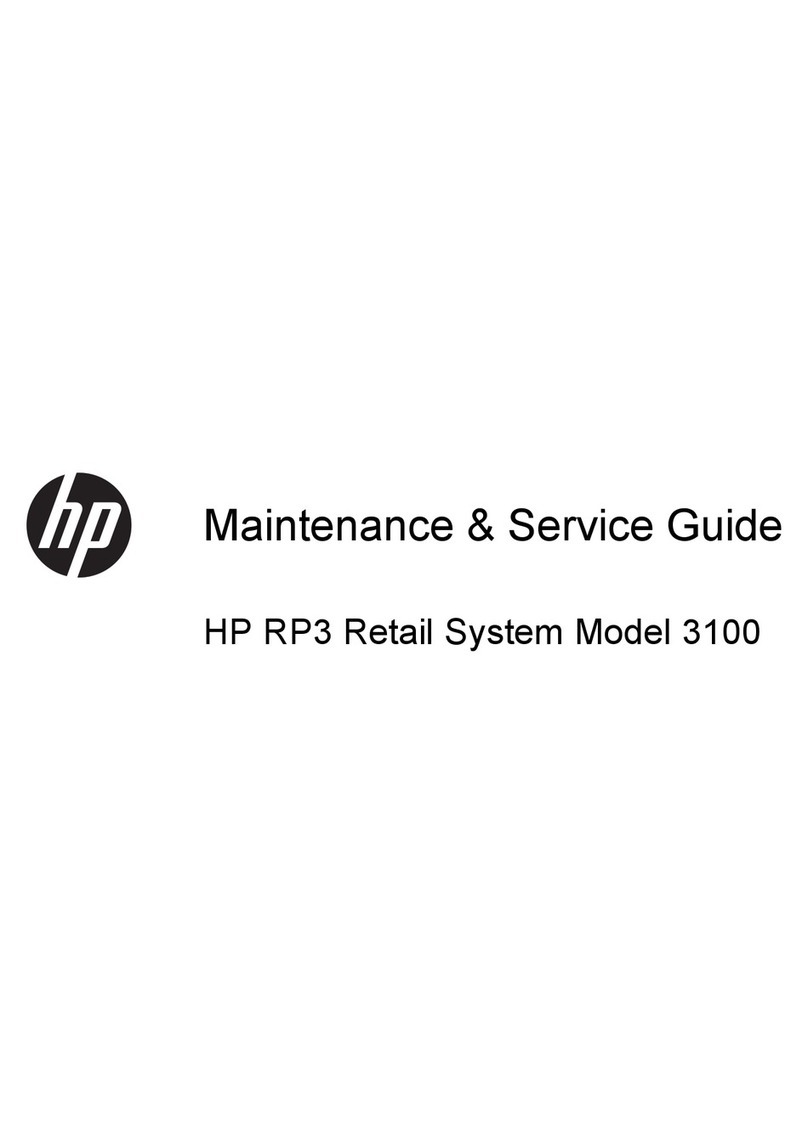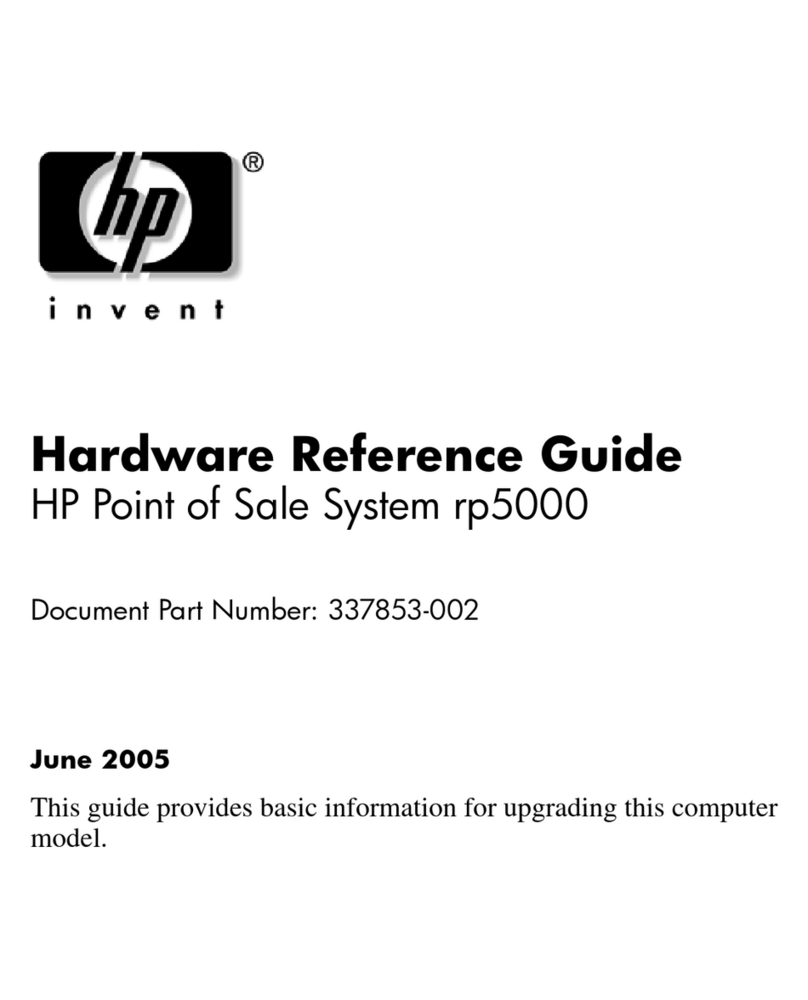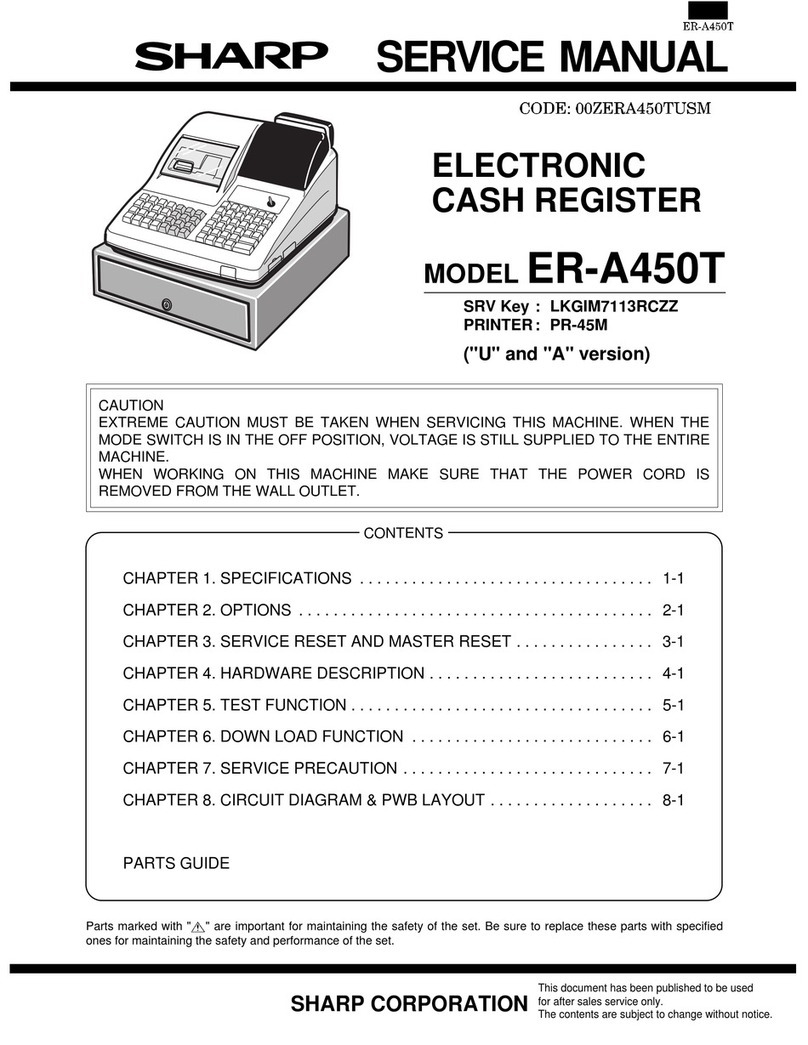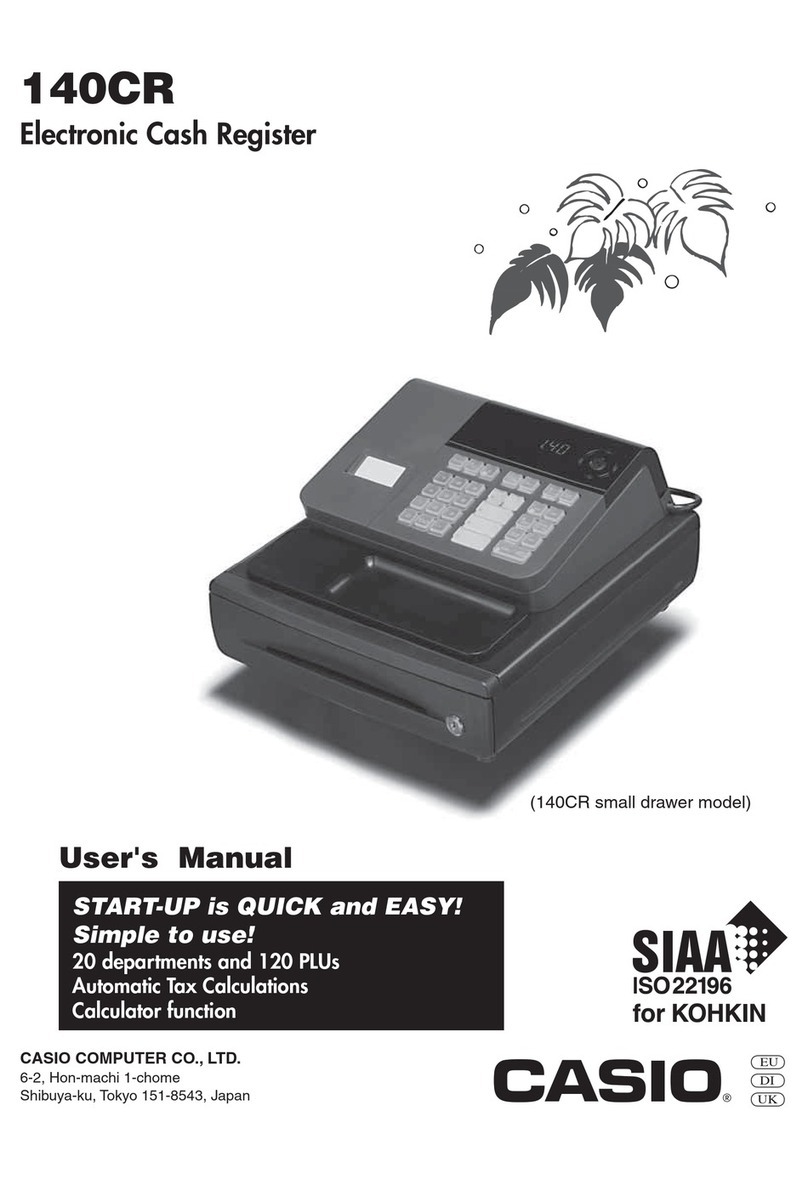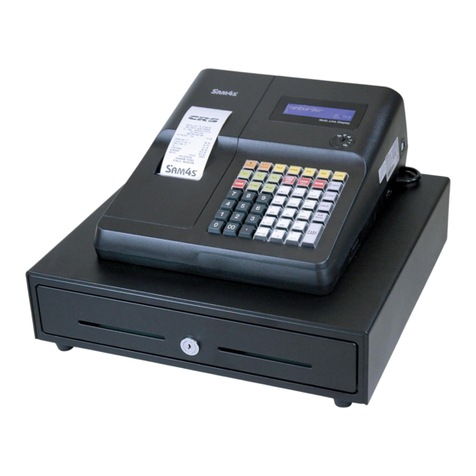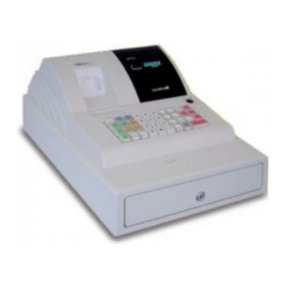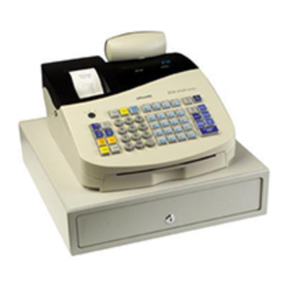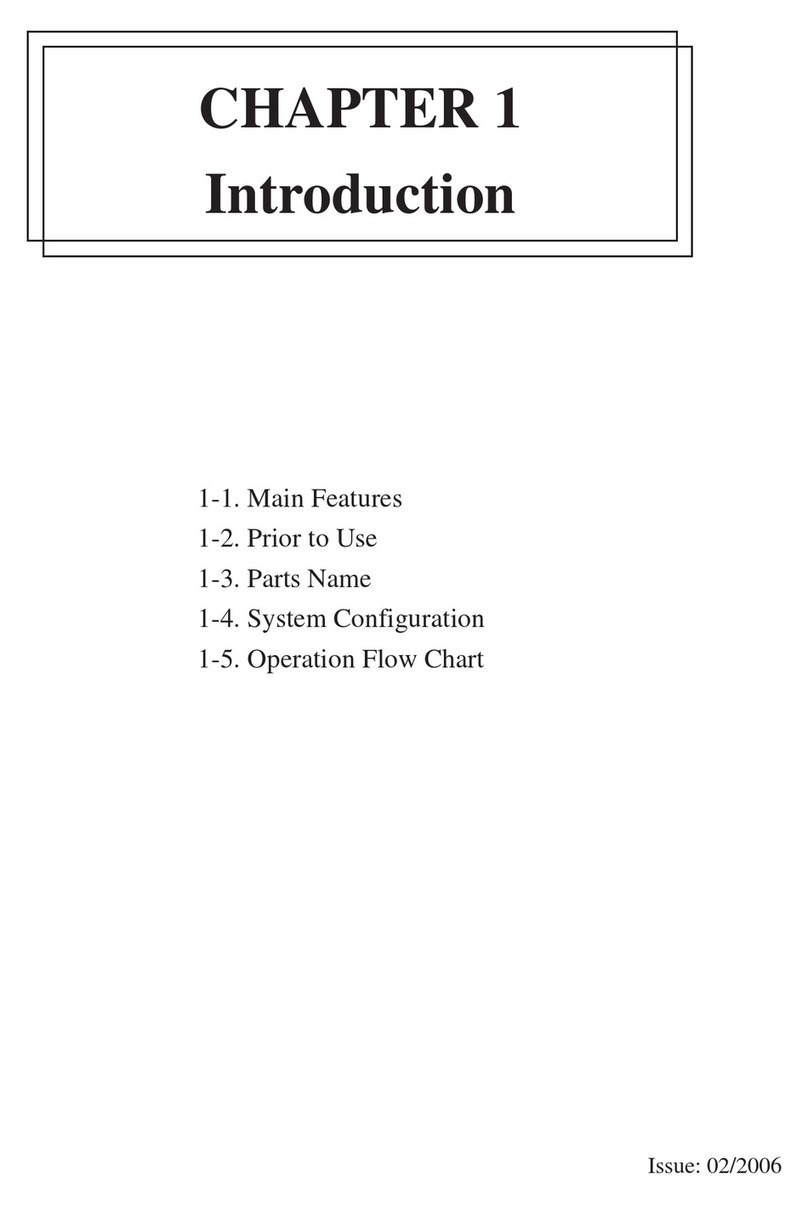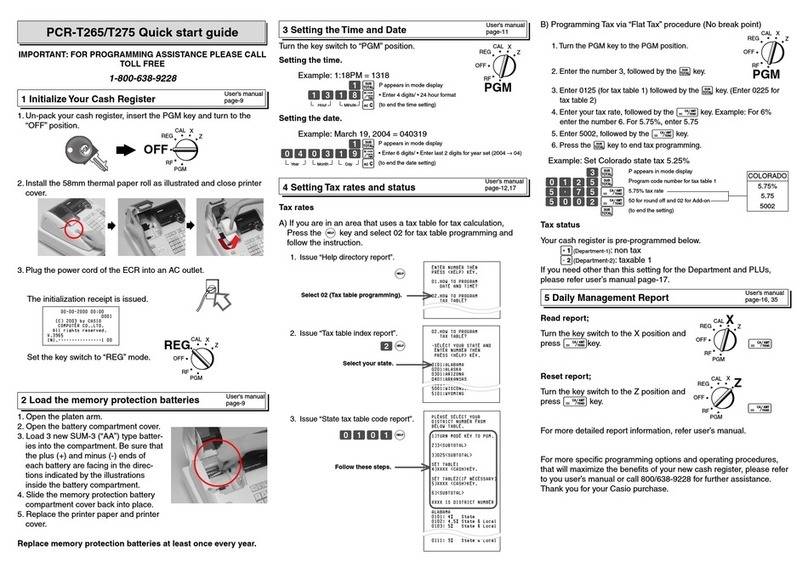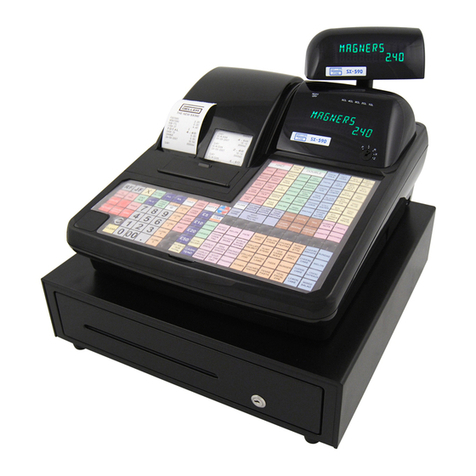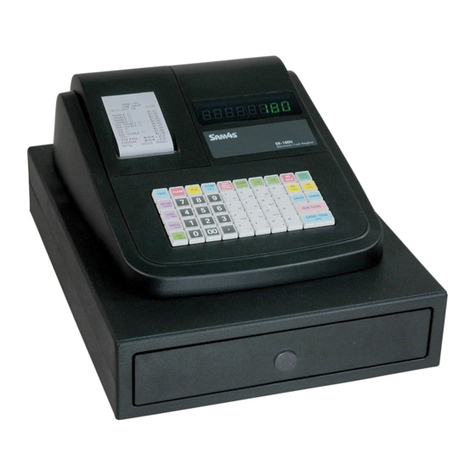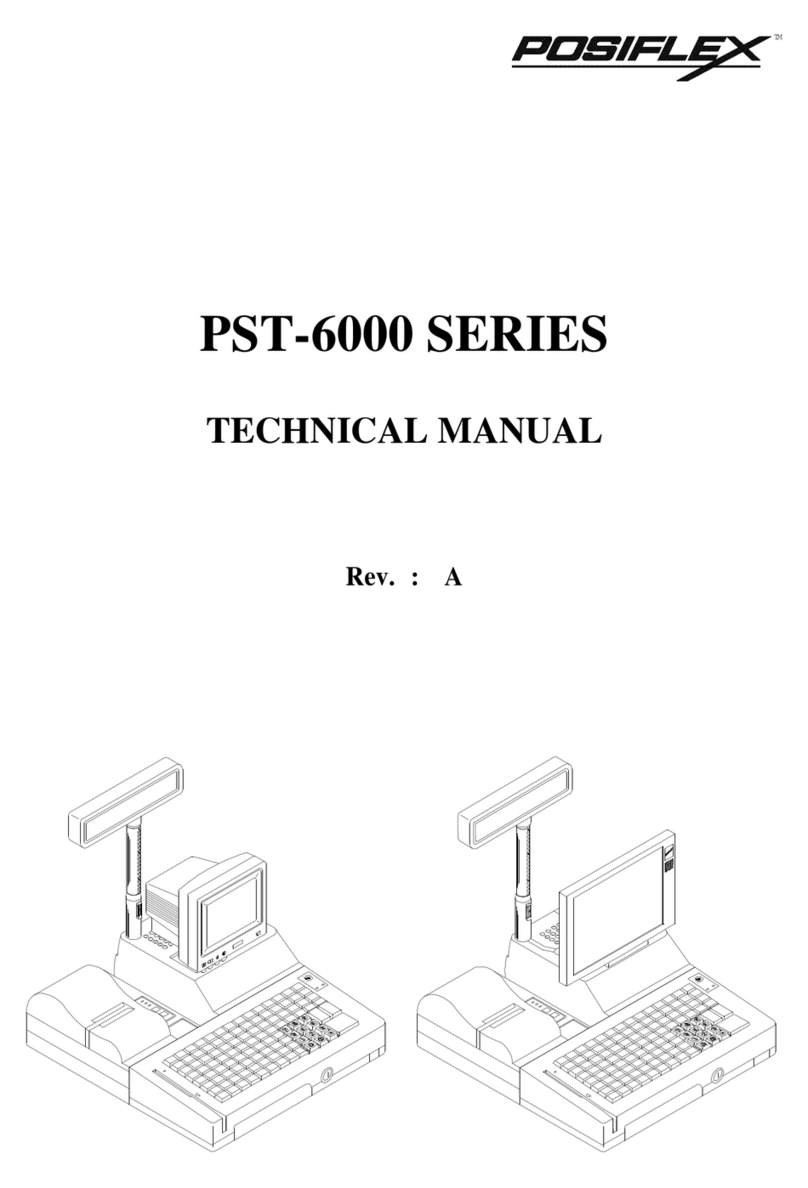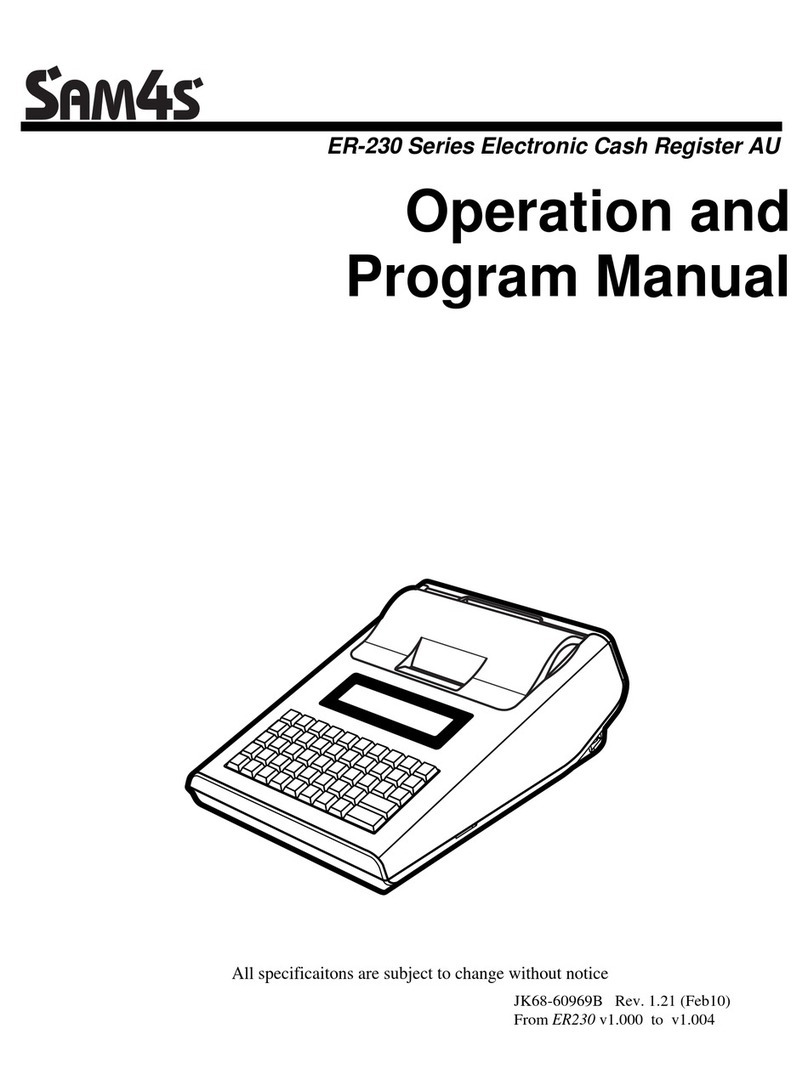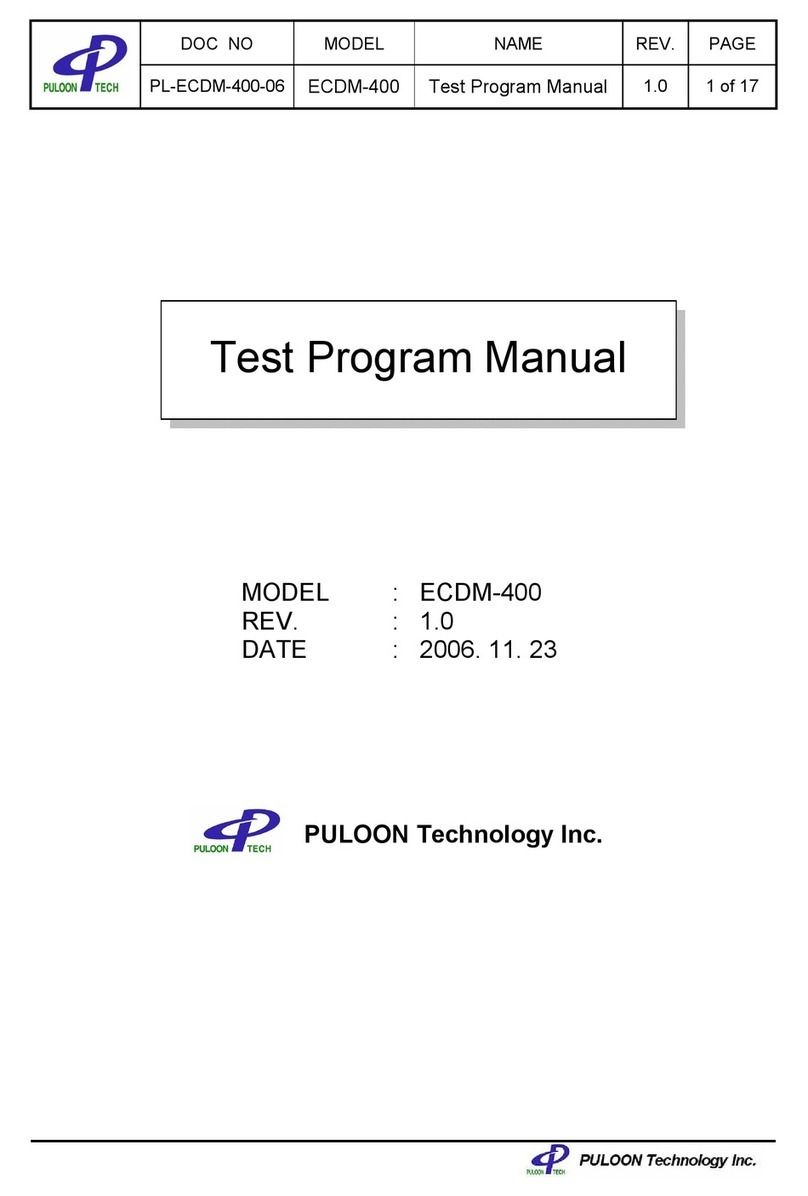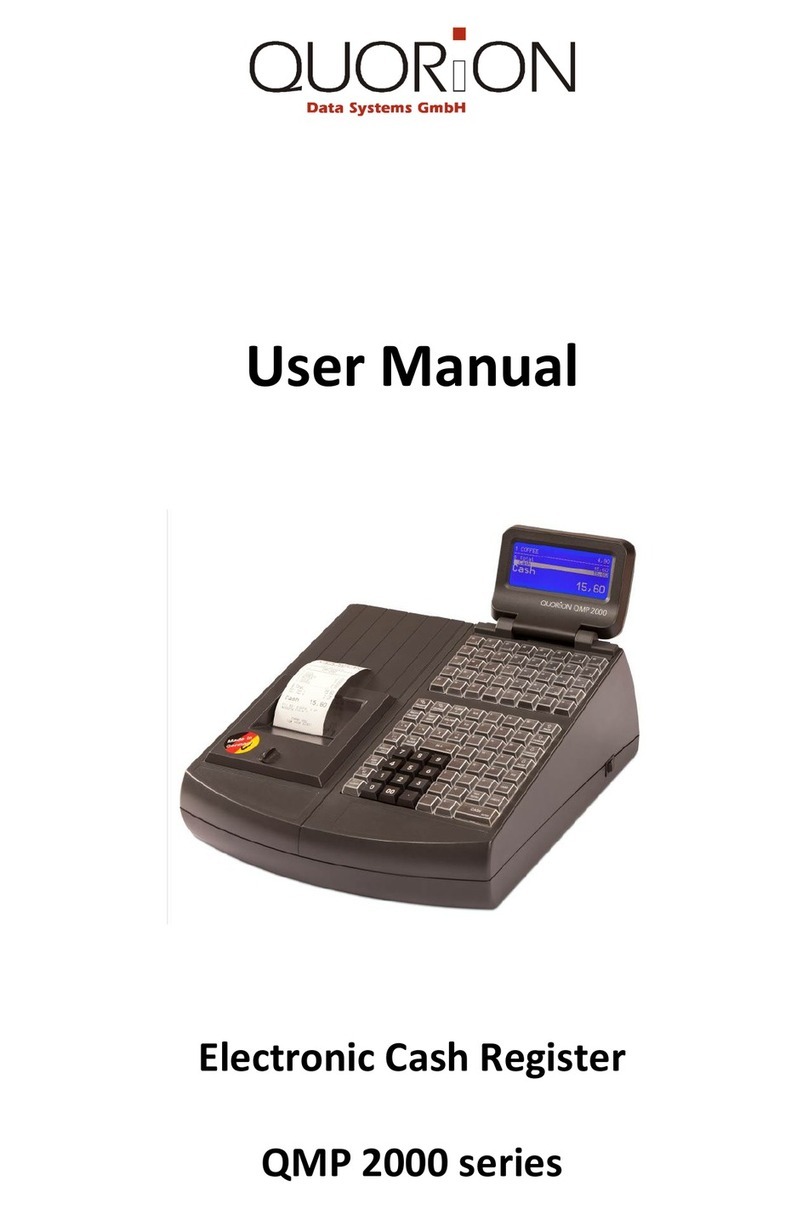HP RP3 Setup guide

HP RP3 Retail System, Model 3100 719219-001 page1
Illustrated Parts & Service Map
HP RP3 Retail System, Model 3100
© 2012 Hewlett-Packard Development Company, L.P. The information con-
tained herein is subject to change without notice. HP shall not be liable for tech-
nical or editorial errors or omissions contained herein. Intel, Pentium, Intel
Inside, and the Intel logo are trademarks or registered trademarks of the Intel
Corporation and its subsidiaries in the U. S. and other countries.
Document Number 719219-001. 1st Edition December 2012.
Key Specifications
Spare Parts
Processor Type Intel® Celeron® Processor 807UE with Intel HD Graphics
RAM Type
Non-ECC DDR3 PC3-10600 (1333 MHz)
Maximum RAM 8 GB
Ports • Three (3) port 12 Volt USB + PWR Card (optional)
• Two (2) port Power Configurable RS232 Serial Card COM
3 & 4 (optional)
• Power Configurable Serial Ports (COM 1, 2, 3 and 4) using
the HP BIOS
Chipset Intel HM65 Express
Graphics Adapter Integrated Intel HD graphics
I/O Interfaces 5 USB 2.0; 1 standard + 3 optional USB+PWR 12; 1
USB+PWR 24V (Printer); 1 RJ-12 Cash Drawer (dual drawers
via optional Y cable); 2 standard + 2 optional RS-232 Powered
(+5V/+12V, F-10 Setup Configurable); 1 Parallel2 PS/2 for
keyboard and mouse; 1 VGA; 1 DisplayPort v1.1a; 1 RJ-45 10/
100/1000 LAN; 1 Audio line-in; 1 Audio line-out
Operating Systems • Windows 7 Professional 32/64
• Windows Embedded POSReady 2009
• FreeDOS
System Unit
1 System board (includes Intel Celeron 807UE processor; includes thermal
material) 682426-001
2 Power supply, 115W 682435-001
3 Front bezel 682430-001
* Access panel 682429-001
* Not shown
Mass Storage Devices (not illustrated)
320 GB, 7200 rpm SATA hard drive 639135-001
256 GB Solid State Drive (SSD) 661842-001
128 GB Solid State Drive (SSD) 665961-001
32 GB Solid State Drive (SSD), MLC 686616-001
Cables
1 Front I/O cable and power switch assembly 682432-001
2 Hard drive power/data cable assembly 682433-001
* Adapter, DisplayPort to VGA 632484-001
* Adapter, DisplayPort to DVI 662723-001
* Adapter, DisplayPort to HDMI 617450-001
* DisplayPort cable 487562-001
*Not shown
Keyboards (not illustrated)
PS/2
USB
Washab l e
674312-xx1**
674313-xx1
613125-xx1
Arabic -171 LA Spanish -161
F Arabic -DE1 Norwegian -091
BHCSY -B41 People’s Republic of China*
-AA1
Belgian -181 Portuguese -131
Brazilian Portuguese -201 Romanian -271
Czech -221 Russian -251
Danish -081 Slovakian -231
French -051 South Korea* -KD1
French Canadian -121 Spanish -071
German -041 Swedish -101
Greek -151 Swiss -111
Hebrew -BB1 Taiwanese* -AB1
Hungarian -211 Thai* -281
India* -D61 Turkish -141
International English -L31 U.S. -001
Italian -061 U.K. -031
Japanese* -291
*not for 674312-xx1 **-181 for 674312-xx1 only
System Board, Memory, Expansion Boards
1 PCIe to PCIe riser 711791-001
2 PCIe to PCI riser 711790-001
3 2-port powered serial card 638947-001
4 Powered USB card, 12V 711788-001
5 Ralink RT5390R 802.11bgn 1x1 Wi-Fi Adapter (WLAN module) 701396-001
* Atheros AR9462 802.11b/g/n Wi-Fi Adapter (WLAN module) 701398-001
Memory modules (PC3-12800, CL11)
*2GB 689372-001
*4GB 689373-001
*8GB 689374-001
* Not shown

HP RP3 Retail System, Model 3100 719219-001 page2
Password Security
Establishing a Setup or Power-On password:
1. Turn on or restart the computer.
2. As soon as the computer turns on, press the Esc key while “Press the ESC key for Startup
Menu” message is displayed at the bottom of the screen.
3. Press the F10 key to enter Computer Setup.
4. To establish Setup password, select Security > Setup Password and follow the instructions.
- or -
To establish a Power-On password, select Security > Power-On Password and follow the
instructions on the screen
5. Before exiting, click File > Save Changes and Exit.
Resetting a Setup or Power-On password:
1. Turn off the computer and disconnect the power cord from the power outlet.
2. Remove the access panel.
3. On the system board, locate the header labeled PSWD.
4. Remove the jumper from the header.
5. Replace the jumper.
6. Replace the chassis access panel and reconnect the power cord.
7. Turn on the computer and allow it to start.
Clearing CMOS
1. Turn off the computer and disconnect the power cord from the power outlet.
2. Remove the access panel.
3. On the system board, press and hold the CMOS button for 5 seconds.
4. Replace the chassis access panel and reconnect the power cord.
5. Turn on the computer and allow it to start.
Miscellaneous Parts
1 Fan assembly 682431-001
2 Speaker 647447-001
3 Antenna kit for use with WLAN modules 711789-001
* Hard drive grommet 594220-001
* Rubber feet 583654-001
* Cover, powered serial port 353054-001
* Mouse, PS2, optical 609250-001
* Mouse, washable 619580-001
* Mouse, optical, black 537749-001
* Mouse, laser, black 570580-001
*Not shown
Diagnostic LEDs
LED Color LED Activity State/Message
Power Green On Computer on
Power Green 1 blink every 2 seconds. Normal Suspend Mode.
Power Red 1 blink every second followed
by a 2 second pause. CPU thermal shutdown.
Power Red 3 blinks, 1 blink every second
followed by a 2 second pause. Processor not installed.
Power Red 4 blinks, 1 blink every second
followed by a 2 second pause. Power failure (power supply over-
load).
Power Red 5 blinks, 1 blink every second
followed by a 2 second pause. Pre-video memory error.
Power Red 6 blinks, 1 blink every second
followed by a 2 second pause. Pre-video graphics error.
Power Red 7 blinks, 1 blink every second
followed by a 2 second pause. System board failure (ROM).
Power Red 8 blinks, 1 blink every second
followed by a 2 second pause. Invalid ROM based on Checksum.
Power Red 9 blinks, 1 blink every second
followed by a 2 second pause. System powers on but is unable to
boot.
Power Red 10 blinks, 1 blink every second
followed by a 2 second pause. Bad option card.
Power Red 12 blinks, 1 blink every second
followed by a 2 second pause.
Beeps stop after a third itera-
tion and computer reboots.
Health timer expired.
none none System does not power on and
LEDs are not flashing. System unable to power on.
Computer Setup Menu
Heading Option/Description
File System Information - Lists the following main system specifications:
• Product name
• SKU number (some models)
• Processor type/speed/stepping
• Cache size (L1/L2/L3)
• Installed memory size/speed/chan
• Integrated MAC Address
• System BIOS
• Chassis serial number
• Asset tracking number
• ME firmware version
• ME Management mode
About - Displays copyright notice.
Set Time and Date - Allows you to set system time and date.
Flash System ROM - Allows you to select a drive containing a new BIOS.
Replicated Setup - Save to Rmvble Media and Restore from Rmvble Media
Default Setup: Save Current Settings as Default, Restore Factory Settings as Default
Apply Defaults and Exit - Applies the selected default settings and clears any
established passwords.
Ignore Changes and Exit - Exits Computer setup without saving changes.
Save Changes and Exit - Saves changes to system configuration or default
settings and exits Computer Setup.
Storage Device Configuration - Lists all installed BIOS-controlled storage devices.
The following options are available:
• CD-ROM - Let you view drive size, model, firmware version, serial
number, connector color.
• Hard Disk - Let you view drive size, model, firmware version, serial
number, connector color, SMART. Also lets you set Translation Mode
(Automatic, Bit-Shift, LBA Assisted, User, and Off).
• Diskette Drive - model and firmware version.
• SATA Defaults - lets you set Translation Mode (Automatic, Bit-Shift,
LBA Assisted, User, and Off).
• eSATA port - Allows you to set a SATA port as an eSATA port for use
with an external drive.
• SATA Emulation - IDE, RAID, or AHCI.
• Removable Media Boot - Enables/disables ability to boot the system
from removable media.
• Max eSATA Speed - Allows you to choose 1.5 Gbps or 3.0 Gbps as the
maximum eSATA speed.
DPS Self-Test - Allows you to execute self-tests on ATA hard drives.
Boot Order - Allows you to specify boot order.
• Shortcut to Temporarily Override Boot Order
Security Setup Password - Allows you to set and enable the setup (Admin) password.
Power-On Password - Allows you to set and enable power-on password.
Password Options - When any password exists allows you to lock legacy
resources, enable/disable Setup Browse Mode, set password prompt, enable/
disable network server mode, specify password requirement for warm boot,
and set stringent passwords.
Smart Cover (some models) - Allows you to lock/unlock cover lock and set
status of cover removal sensor.
Device Security - Allows you to set Device Available/Device Hidden for:
embedded security devices, serial and parallel ports, system audio, network
controller, and SATA ports.
USB Security - Allows you to set Device Available/Device Hidden for front
USB ports 1-4, rear USB ports 1-6, accessory USB ports 1-4.
Slot Security - Allows you to disable any PCI or PCI Express slot.
Network Boot - Enables/disables boot from OS (NIC models only).
System IDs - Allows you to set Asset tag, Ownership tag, Chassis serial
number or UUID, and keyboard locale setting.
System Security (some models) - Allows you to enable/disable:
• Data Execution Prevention (enable/disable)
• Virtualization Technology (VTx) (enable/disable)
• Virtualization Technology Directed I/O (VTd) (enable/disable)
• Intel TXT (LT) (enable/disable)
• Embedded Security Device Support (enable/disable)
• OS management of Embedded Security Device (enable/disable)
• Reset of Embedded Security Device through OS (enable/disable)
DriveLock Security - Assign/modify master or user password for hard
drives.
Power OS Power Management - Allows you to enable/disable Runtime Power Man-
agement, Idle Power Savings, Unique Sleep State Blink Rates.
Hardware Power Management - Allows you to enable/disable SATA bus
power management and S5 maximum power savings.
Thermal - Allows you to control minimum fan speed.
Advanced Power-On Options - Allows you to set:
• POST mode-QuickBoot, FullBoot, Clear Memory, FullBoot every x days
• POST messages - Enable/disable
• Press the ESC key for Startup Menu - Enable/disable
• Option ROM prompt - Enable/disable
• After Power Loss - Off/on/previous state
• POST Delay - None, 5, 10, 15, or 20 seconds
• System Recovery Boot Support - Enable/disable
• Remote Wakeup Boot Source - Remote server/local hard drive
• Bypass F1 Prompt on Configuration Changes - Enable/disable
BIOS Power-On - Allows you to set the computer to turn on at a preset time.
Onboard Devices - Allows you to set:
• resources or disable Legacy devices
• serial port A-D voltage settings - set to 0V, +5V, +12V
Bus Options (some models) - Allows you to enable/disable PCI SERR# Gen-
eration and PCI VGA palette snooping.
Advanced (con-
tinued)Device Options - Allows you to set:
• Turbo Mode - enable/disable
• Printer Mode - Bi-Directional, EPP & ECP, Output Only
• Num Lock State at Power-on - off/on
• Integrated Video - enable/disable
• Internal Speaker - enable/disable
• NIC Option ROM Download - enable/disable
• Multi-Processor - enable/disable
• Hyper-threading - enable/disable
VGA Configuration - Displayed only if there are multiple PCI video adapters
in the system. Allows you to specify which VGA controller will be the
“boot” or primary VGA controller.
AMT Configuration - Allows you to set:
• AMT-enable/disable functions of the embedded Management Engine
(ME) such as Active Management Technology (AMT).
• Unconfigure AMT/ME-unconfigure any provisioned management set-
tings for AMT.
• Watchdog Timer-set amount of time for a operating system and BIOS
watchdog alert to be sent if the timers are not deactivated.

HP RP3 Retail System, Model 3100 719219-001 page3
System Board
System Board Connectors and Jumpers (component location may vary)
PWR COMB Powered serial port FRONT AUD Front panel connector
PS/2 PS2 connectors CMOS CMOS reset button
X1PCIEXP1 PCIe X1 slot PWRCMD Power connector
DISPLAYPORT DisplayPort connector PWR Main power connector
PAR Parallel port SATA PWR Hard drive power connector
VGA Monitor connector CHFAN Main fan connector
12VUSB Powered USB connector SPKR Speaker connector
USB USB connectors PSWD Password header
RJ45/USB Network/USB connector SATA0 Hard drive connector
PB/LED Front I/O power button connector DIMM1 Memory socket
RPOS RISER Riser card connector FRONT_USB Front I/O USB connector
MEDIA1 USB media header MEDIA USB media header
XBT1 RTC battery slot HSENSE Hood sensor connector
X1PCIEXP11 WLAN module slot
Other manuals for RP3
1
This manual suits for next models
1
Table of contents
Other HP Cash Register manuals
